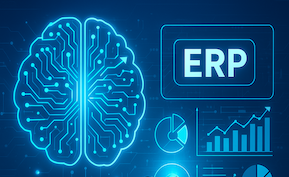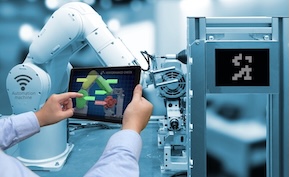Business Intelligence
Visualizing Everything, Everywhere: How Cloud Dashboards Empower Remote & Hybrid Workforces

Cloud dashboards have become the nerve center of modern hybrid and remote work. As teams operate across time zones and devices, real-time data visibility has become essential for collaboration, productivity, and alignment. Today’s cloud-native dashboards empower organizations to visualize everything—sales, operations, and financial performance—anywhere, anytime.
The rise of visual collaboration in hybrid work
Remote and hybrid work models have permanently reshaped how teams access and share information. Instead of static reports or emailed spreadsheets, cloud dashboards provide live, shared data environments accessible from any location. They bring context and clarity to distributed work by allowing everyone to see the same metrics in real time.
- Shared truth: Teams work from the same, always-updated dataset.
- Instant access: Dashboards are accessible through browsers and mobile apps.
- Collaborative insights: Commenting, annotation, and alerts create active communication around data.
How cloud dashboards enable hybrid productivity
Cloud-native dashboards connect key enterprise systems—like ERP, CRM, and project management tools—to create a unified command center for hybrid teams. Everyone from field reps to finance leaders can see performance metrics in real time, breaking down silos and accelerating decisions.
- Data integration: APIs pull live data from multiple SaaS systems.
- Visualization: Dashboards translate complex data into easy-to-read visuals.
- Automation: Alerts and notifications trigger when metrics change or anomalies appear.
Key features that make cloud dashboards hybrid-ready
- Cloud-first architecture: Accessible from any device with minimal setup.
- Real-time data sync: No manual refresh—dashboards update automatically via APIs.
- Role-based visibility: Employees only see data relevant to their responsibilities.
- Collaboration tools: Embedded chat, commenting, and sharing functions keep teams aligned.
- AI insights: Predictive suggestions highlight risks and opportunities automatically.
Top technologies empowering remote visibility
- Microsoft Power BI Cloud: Seamless integration with Microsoft Teams for live data collaboration.
- Tableau Cloud: Enables rich visual analytics accessible through any browser.
- Google Looker Studio: Empowers cross-departmental dashboards and embedded analytics.
- Grafana Cloud: Real-time operational dashboards for IT and DevOps teams.
- Monday.com + Power BI: Combines project visibility with live performance metrics.
Why visualization is the language of remote work
Remote workers can’t rely on hallway conversations or in-person meetings to understand project status. Visual dashboards replace those interactions with clear, data-driven storytelling. Charts, KPIs, and alerts turn abstract data into shared narratives—driving transparency, accountability, and trust across teams.
Benefits for hybrid organizations
- Unified visibility: Everyone—from executives to field employees—operates from the same data source.
- Faster decisions: Real-time dashboards eliminate delays in communication and reporting.
- Greater accountability: Performance metrics are transparent to all stakeholders.
- Higher engagement: Interactive visuals and self-service analytics keep employees connected to goals.
- Operational resilience: Cloud dashboards maintain continuity across distributed teams.
Security and governance considerations
- Secure authentication: Enforce SSO, MFA, and OAuth for all dashboard users.
- Access control: Define user permissions based on department and role.
- Data encryption: Protect sensitive information in transit and at rest.
- Compliance: Ensure dashboards meet SOC 2, ISO 27001, and GDPR standards.
Measuring success in a hybrid environment
- Adoption rate: % of employees using dashboards weekly.
- Data latency: Average delay between data generation and display.
- Collaboration engagement: Number of shared dashboards or comments per user.
- Decision speed: Time from insight detection to action taken.
- User satisfaction: Employee feedback on data accessibility and clarity.
FAQs
What are cloud dashboards? Cloud dashboards are online analytics tools that visualize live business data from multiple sources, accessible anywhere.
How do they support hybrid work? They provide shared, real-time visibility across teams, enabling collaboration and faster decision-making from any location.
Which industries use cloud dashboards? All sectors—from finance and manufacturing to SaaS and healthcare—rely on them for distributed team management.
Are cloud dashboards secure? Yes, most enterprise dashboards include encryption, access controls, and compliance certifications.
Bottom line
As hybrid and remote work continue to shape the enterprise, cloud dashboards have become mission-critical. They connect data, people, and performance in one real-time view—ensuring every team, anywhere in the world, can act with clarity and confidence.






